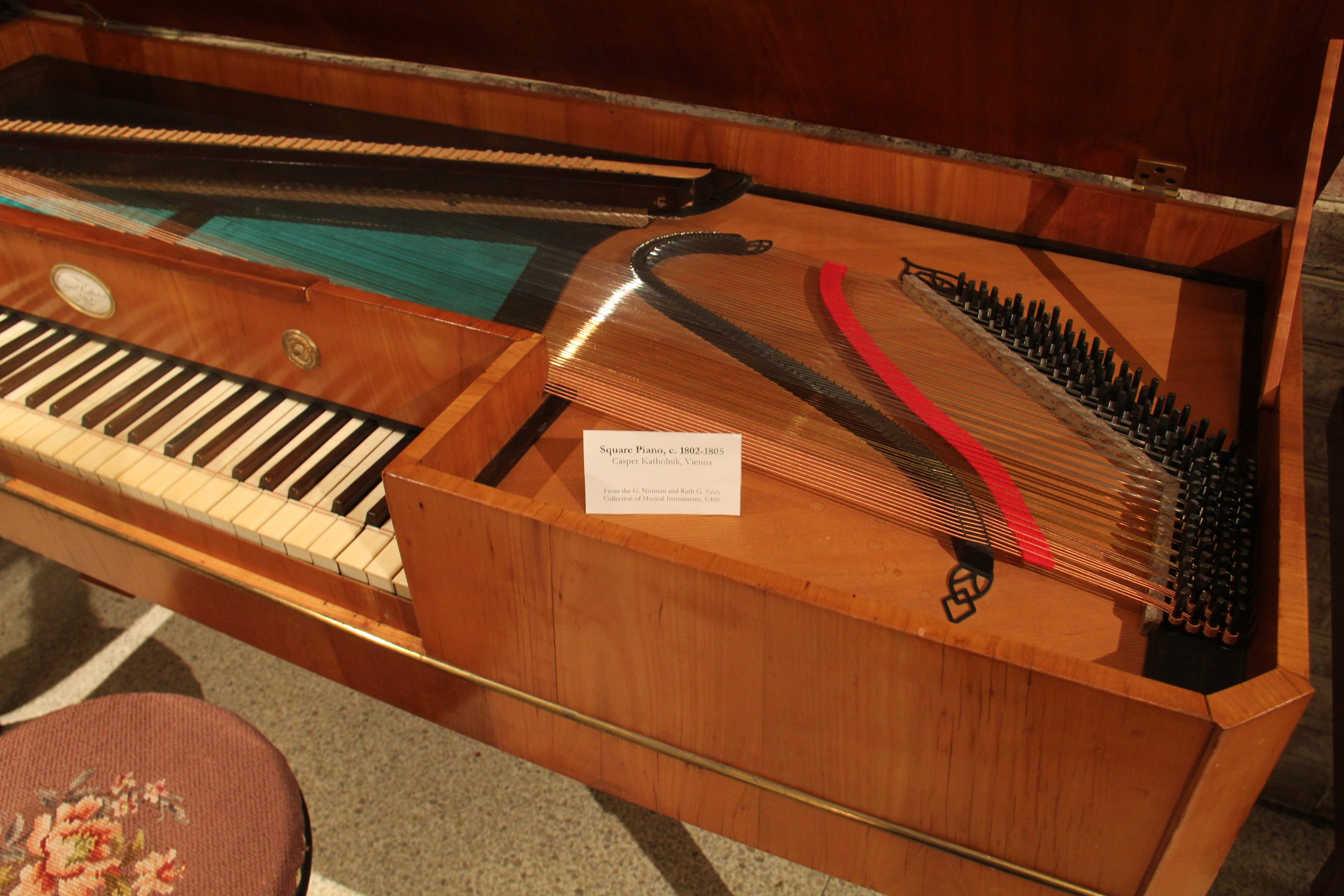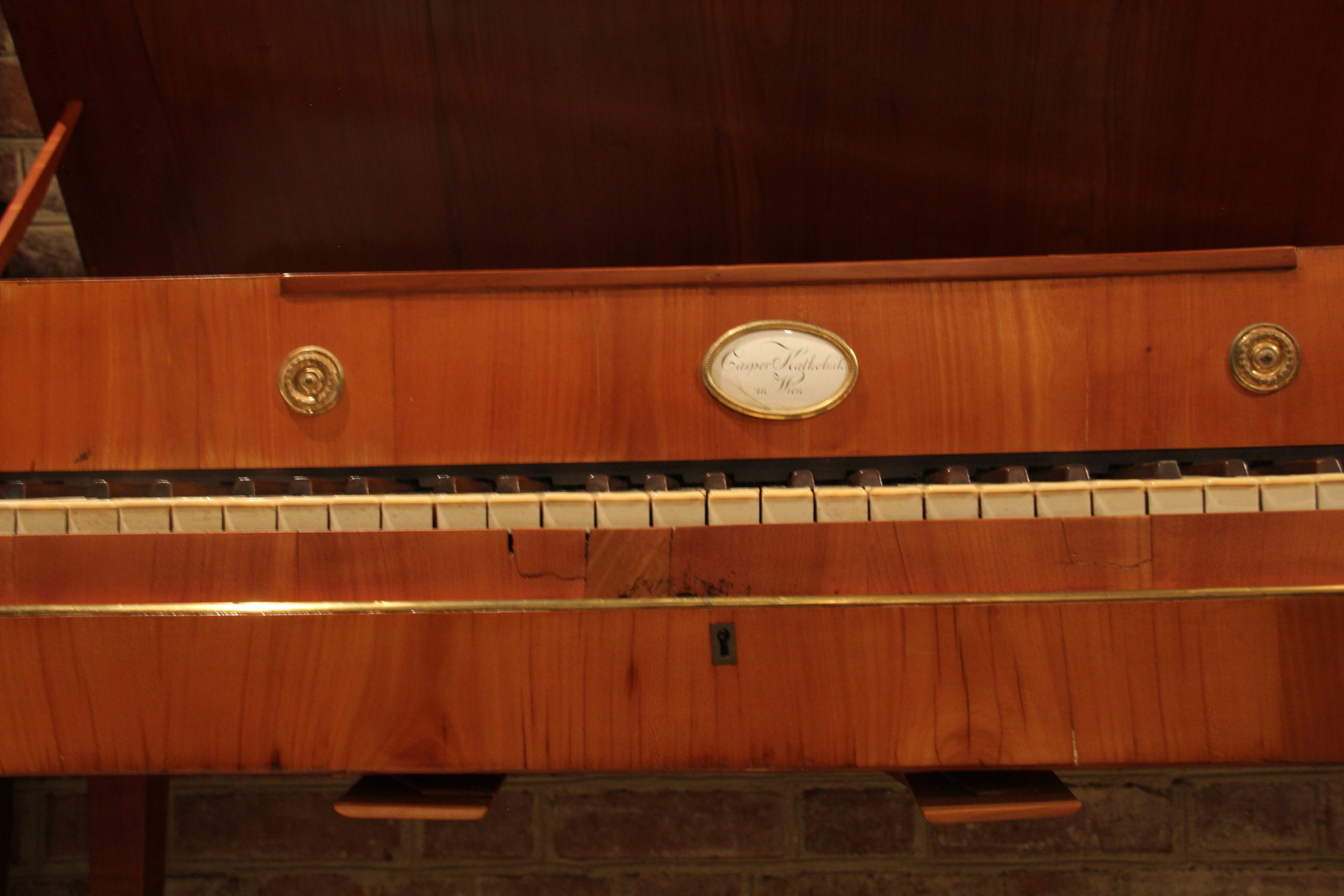Katholnik Square Piano
Details
- Origin: Vienna, Austria
- Date: 1802-1805
- Maker: Casper Katholnik
- Collection: E 406
Description
Has an apple-veneered pinewood case with brass banding on its square legs. Round brass medallions with laurel carvings decorate the baseboard, with flat wooden cut-outs at the end of bridge and pin block. The soundboard is spruce and the framing is pine. Its keys are bone. It has two knee levers. “Casper Katholnik / in Wein” in ceramic plate, with a brass rim, is on nameboard, and “ROBERT E. SMITH / fortepiano maker / BOSTON 1983” is on a printed slip glued to back of the nameboard.
Beethoven Sonata in A Major, Op. 2, No. 2, I. – played by Elaine Guo on the Katholnik Square Piano, 6/21/22
Caspar Katholnik was born in the village of Villach in Austria in the late 18th century. In 1801, he moved to Vienna and became an instrument maker, and became known for making square pianos. Square pianos had become popular during the late 18th century, made famous by prominent manufacturers such as Jacob Kirckman and Burkat Shudi. The versatility of the instrument was one of its major boons, as the square piano could be found almost anywhere and deemed appropriate, especially in less formal settings. For instance, this Katholnik Viennese piano was decidedly made for inside the home, a realm where women became able to pick up such instruments and become pianists themselves at a time when that had been previously looked down upon.
Sources
Cole, Michael. “Square Pianos – A Short History.” Square Pianos, February 2022. https://www.squarepianos.com/square.html.
Khan, Elizabeth. “The G. Norman Eddy Instrument Collection: Please Touch!” CVNC, February 22, 2002. https://cvnc.org/article.cfm?articleId=4463.
“Square Piano.” The Met. The Metropolitan Museum of Art. Accessed June 22, 2022. https://www.metmuseum.org/art/collection/search/502530.




